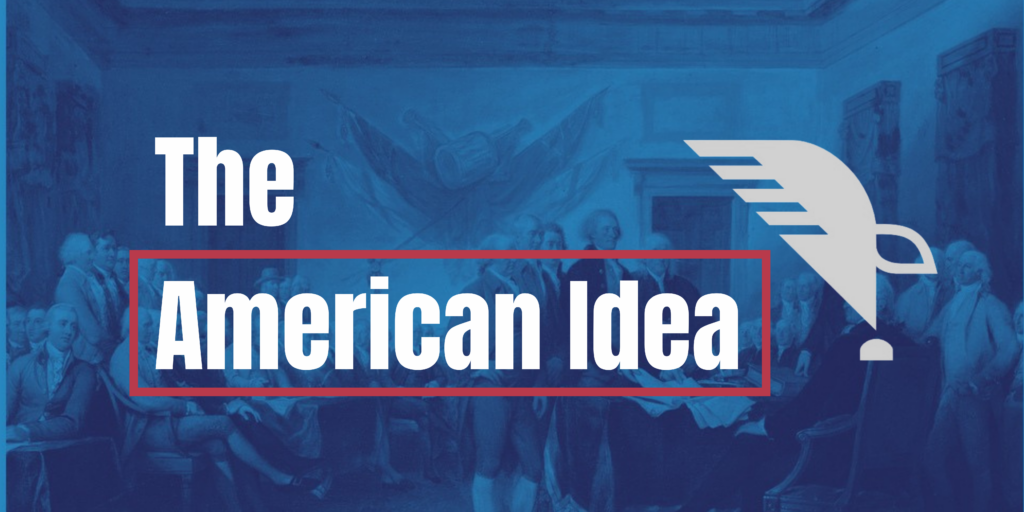When Disaster Strikes: Presidents and Domestic Emergencies
May 22, 2024

Listen and subscribe to the podcast
Join The American Idea’s Listener Email list – get news about upcoming episodes and a chance to offer questions for them, too!
Introduction
In the realm of American governance, the ability of presidents to effectively manage unexpected crises has been a critical aspect of their leadership. From natural disasters to terrorist attacks, these crises often test the resilience and capacity of the nation’s highest office. In this article, we delve into the historical evolution of presidential crisis management in the United States, exploring key moments, challenges, and responses that have shaped this aspect of executive leadership.
Early Republic: Navigating Uncharted Waters
During the Early Republic, the concept of presidential involvement in disaster management was still in its infancy. With limited communication infrastructure and logistical challenges, early presidents such as Washington and Jefferson faced crises with minimal federal intervention. The absence of instantaneous communication meant that responses to disasters like the 1811 Missouri earthquake were largely decentralized, with local communities taking the lead in handling emergencies.
The Emergence of Disaster Management: 1927 Mississippi Floods
A significant turning point in the evolution of presidential crisis management occurred during the 1927 Mississippi floods. President Calvin Coolidge, initially reluctant to intervene due to his small-government philosophy, faced mounting pressure from both the public and media. This crisis highlighted the need for federal involvement in disaster relief efforts. Coolidge’s decision to dispatch Secretary of Commerce Herbert Hoover to the affected region marked the beginning of a more proactive federal approach to crisis management.
From Coolidge to FDR: Growing Government Intervention
Subsequent administrations, particularly under Franklin D. Roosevelt, witnessed a gradual expansion of federal involvement in disaster response. The New Deal era laid the groundwork for agencies like the Federal Emergency Management Administration (FEMA), which would play a crucial role in coordinating disaster relief efforts in the years to come. As disasters grew in scope and scale, so too did the expectations placed on the presidency to provide swift and effective responses.
Challenges and Triumphs: Lessons from the 20th Century
Throughout the 20th century, presidents grappled with a diverse array of crises, ranging from hurricanes to terrorist attacks. Moments such as Nixon’s handling of hurricanes in 1969 and George W. Bush’s response to 9/11 demonstrated the pivotal role of presidential leadership in times of adversity. However, failures such as Bush’s response to Hurricane Katrina underscored the importance of effective crisis management and the potential political consequences of inadequate responses.
Modernization and Adaptation: FEMA and Beyond
The creation of FEMA in the Carter administration represented a milestone in the federal government’s approach to disaster management. Subsequent administrations, including Clinton and Bush, witnessed efforts to modernize and professionalize disaster response capabilities. From utilizing social media for communication to pre-deployment of resources, FEMA underwent significant reforms to enhance its effectiveness in addressing emergent challenges.
State and Local Perspectives: Lessons Learned
While federal leadership is crucial in crisis management, state and local governments also play a vital role in disaster response. States like Florida, with robust disaster preparedness infrastructure, have demonstrated exemplary response capabilities in the face of hurricanes and other emergencies. Conversely, the challenges faced by Puerto Rico following Hurricane Maria underscore the complexities of disaster response, particularly in geographically isolated regions.
Conclusion: Toward Resilient Leadership
The evolution of presidential crisis management in American history reflects the dynamic interplay between governance, technology, and public expectations. From the decentralized approach of the Early Republic to the modern era of federal agencies and intergovernmental cooperation, the presidency has adapted to meet the evolving challenges of crisis response. As the nation continues to confront unforeseen threats, the lessons of history remind us of the imperative for resilient leadership and proactive disaster preparedness at all levels of government.

